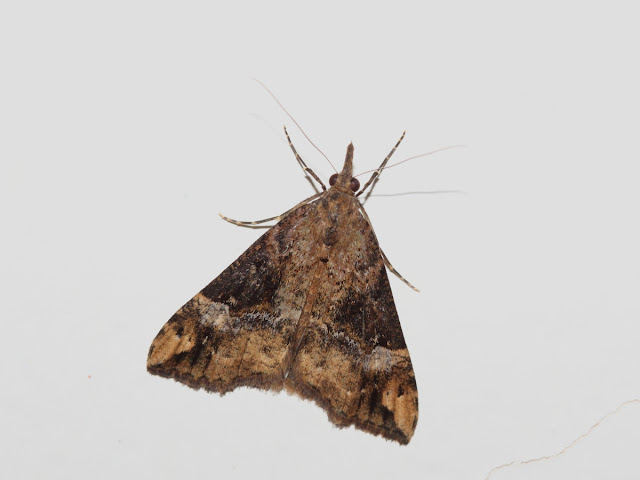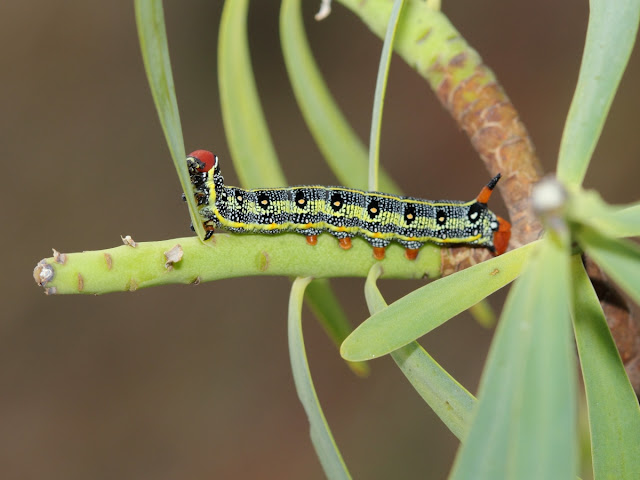Just like in butterflies, the Canary islands holds only a limited amount of species of moths (compared to mainland European countries) but the fauna is a very diverse one. It is a mixture of widespread SW European species, N African species, African migrants and endemic species.
During my trip I had the luck to stay at some locations with spotlights on the terraces that attracted nice numbers of moths.
It is by no means the intention of this post to give a full overview, just to give a glimpse of the diverse fauna.
For determination I used several sources, two of them are most important. Last year during my stay in Tenerife I could buy this book of Marcoz Baez: http://www.pemberleybooks.com/product/mariposas-de-canarias/30/
It gives an overview of all Canarian species with a fair number of them on picture (collection specimens), nomenclature is a bit outdated.
When coming to an initial determination with that book I later on checked this with pictures on lepiforum.
Noctuidae
Euxoa canariensis
Unlike what the name suggests this species is not an endemic although the nominotypical subspecies is and is originally described from the Canary islands. It is a widespread, but like all Euxoa species, a variable species.
Gerarctia poliotis
A very small Noctuid species, endemic.
During my trip I had the luck to stay at some locations with spotlights on the terraces that attracted nice numbers of moths.
It is by no means the intention of this post to give a full overview, just to give a glimpse of the diverse fauna.
For determination I used several sources, two of them are most important. Last year during my stay in Tenerife I could buy this book of Marcoz Baez: http://www.pemberleybooks.com/product/mariposas-de-canarias/30/
It gives an overview of all Canarian species with a fair number of them on picture (collection specimens), nomenclature is a bit outdated.
When coming to an initial determination with that book I later on checked this with pictures on lepiforum.
Noctuidae
Euxoa canariensis
Unlike what the name suggests this species is not an endemic although the nominotypical subspecies is and is originally described from the Canary islands. It is a widespread, but like all Euxoa species, a variable species.
Acontia lucida
A widespread S European species.
Caradrina rebeli
An endemic species, seemed to be widespread. In Baez both Caradrina rebeli and Caradrina lanzarotensis are mentioned but the latter seems nowadays to be considered a synonym, probably referring to the pale morphs.
dark morph on Gran Canaria
pale morph on Fuerteventura
Mniotype usurpatrix
Endemic of the Canary islands.
A very small Noctuid species, endemic.
Erebidae
Rhynchina canariensis
An endemic and variable species.
Hypena obsitalis
A widespread Mediterranean species with migratory behavior.
Cerocala algiriae
A Mediterranean species.
Eublemma cochylioides
A southern migratory species, a marvelous little creature.
Geometridae
Episauris kiliani
This species I didn't see on this trip but last year in La Gomera. As it is a Macaronesian endemic specialized for the three heath above the laurel forests that are so typical for the Macaronesian islands I found it nice to include it here.
Eupithecia tenerifensis
One of the several endemic Eupithecia species, more of them to follow!
Eupithecia schuetzeata
Eupithecia rosai
Scopula guancharia
Again an endemic species.
Scopula asellaria
A Mediterranean species with a Canarian subspecies.
Aspitates collinaria
Endemic to the Canaries.
Microloxia schmitzi
Known from the Canary islands and SW Morocco.
Sphingidae
Hyles tithymali
Nominotypical subspecies is a Canarian endemic, seems to replace Hyles euphorbiae in the Canaries. We only found the species as caterpillar.
Hope you all enjoyed this small introduction to the moths of the Canaries!


























































